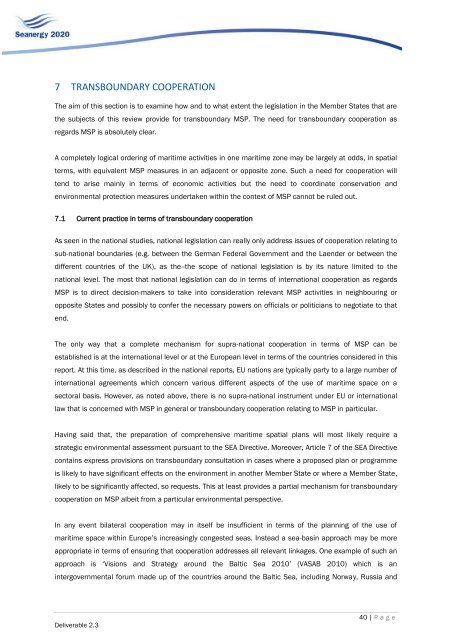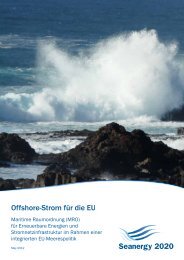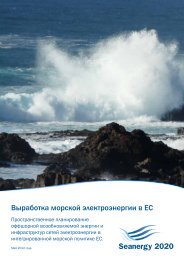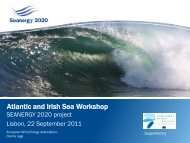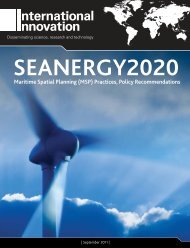Comparative analysis of Maritime Spatial Planning ... - Seanergy 2020
Comparative analysis of Maritime Spatial Planning ... - Seanergy 2020
Comparative analysis of Maritime Spatial Planning ... - Seanergy 2020
Create successful ePaper yourself
Turn your PDF publications into a flip-book with our unique Google optimized e-Paper software.
7 TRANSBOUNDARY COOPERATIONThe aim <strong>of</strong> this section is to examine how and to what extent the legislation in the Member States that arethe subjects <strong>of</strong> this review provide for transboundary MSP. The need for transboundary cooperation asregards MSP is absolutely clear.A completely logical ordering <strong>of</strong> maritime activities in one maritime zone may be largely at odds, in spatialterms, with equivalent MSP measures in an adjacent or opposite zone. Such a need for cooperation willtend to arise mainly in terms <strong>of</strong> economic activities but the need to coordinate conservation andenvironmental protection measures undertaken within the context <strong>of</strong> MSP cannot be ruled out.7.1 Current practice in terms <strong>of</strong> transboundary cooperationAs seen in the national studies, national legislation can really only address issues <strong>of</strong> cooperation relating tosub-national boundaries (e.g. between the German Federal Government and the Laender or between thedifferent countries <strong>of</strong> the UK), as the--the scope <strong>of</strong> national legislation is by its nature limited to thenational level. The most that national legislation can do in terms <strong>of</strong> international cooperation as regardsMSP is to direct decision-makers to take into consideration relevant MSP activities in neighbouring oropposite States and possibly to confer the necessary powers on <strong>of</strong>ficials or politicians to negotiate to thatend.The only way that a complete mechanism for supra-national cooperation in terms <strong>of</strong> MSP can beestablished is at the international level or at the European level in terms <strong>of</strong> the countries considered in thisreport. At this time, as described in the national reports, EU nations are typically party to a large number <strong>of</strong>international agreements which concern various different aspects <strong>of</strong> the use <strong>of</strong> maritime space on asectoral basis. However, as noted above, there is no supra-national instrument under EU or internationallaw that is concerned with MSP in general or transboundary cooperation relating to MSP in particular.Having said that, the preparation <strong>of</strong> comprehensive maritime spatial plans will most likely require astrategic environmental assessment pursuant to the SEA Directive. Moreover, Article 7 <strong>of</strong> the SEA Directivecontains express provisions on transboundary consultation in cases where a proposed plan or programmeis likely to have significant effects on the environment in another Member State or where a Member State,likely to be significantly affected, so requests. This at least provides a partial mechanism for transboundarycooperation on MSP albeit from a particular environmental perspective.In any event bilateral cooperation may in itself be insufficient in terms <strong>of</strong> the planning <strong>of</strong> the use <strong>of</strong>maritime space within Europe‟s increasingly congested seas. Instead a sea-basin approach may be moreappropriate in terms <strong>of</strong> ensuring that cooperation addresses all relevant linkages. One example <strong>of</strong> such anapproach is „Visions and Strategy around the Baltic Sea 2010‟ (VASAB 2010) which is anintergovernmental forum made up <strong>of</strong> the countries around the Baltic Sea, including Norway, Russia andDeliverable 2.340 | P a g e


